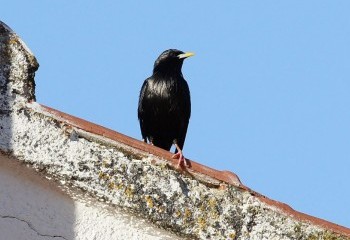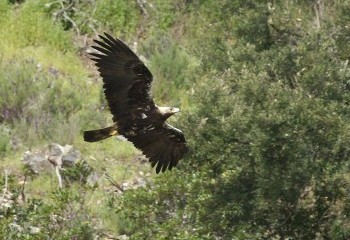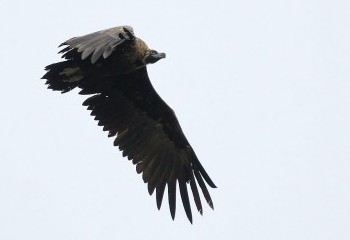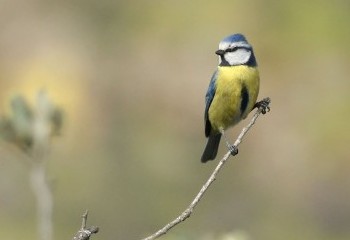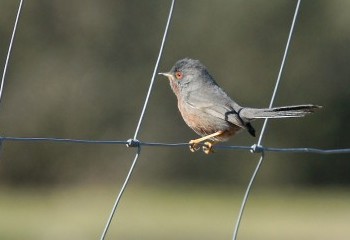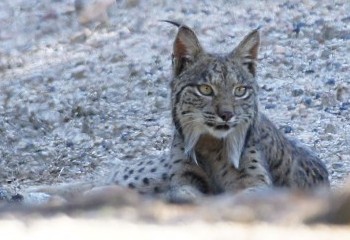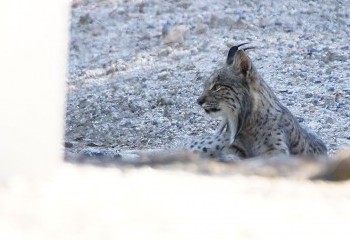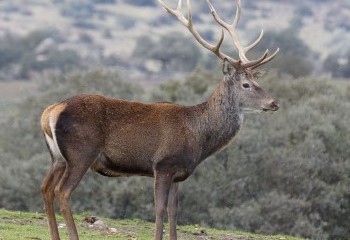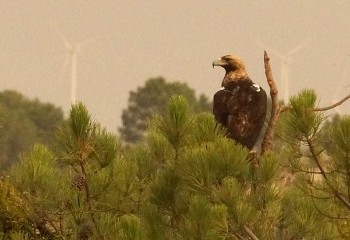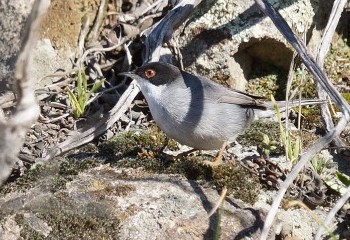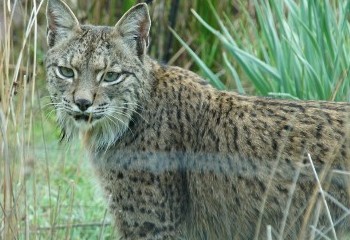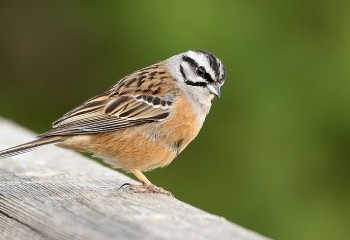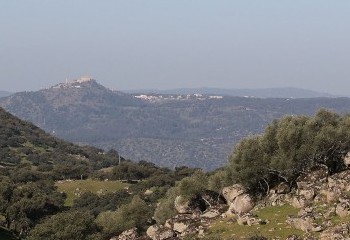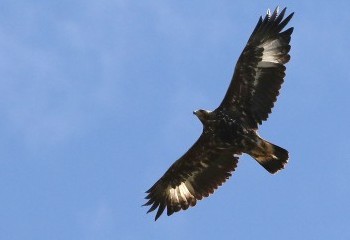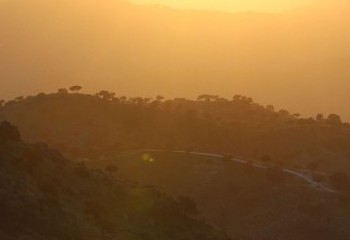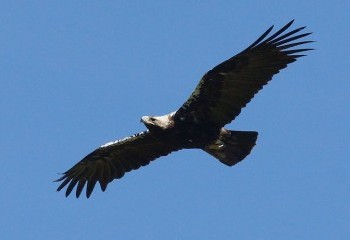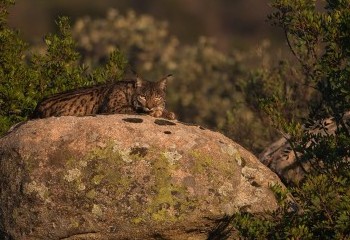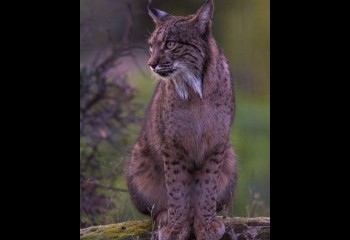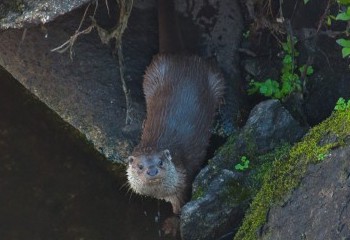IBERIAN LYNX & LA MANCHA
Birds and mammals in Winter
- 7 Days
- From January 23 to January 29, 2023
- IBERIAN LYNX & LA MANCHA
- Tour Limit 7
- € 295 SINGLE SUP.
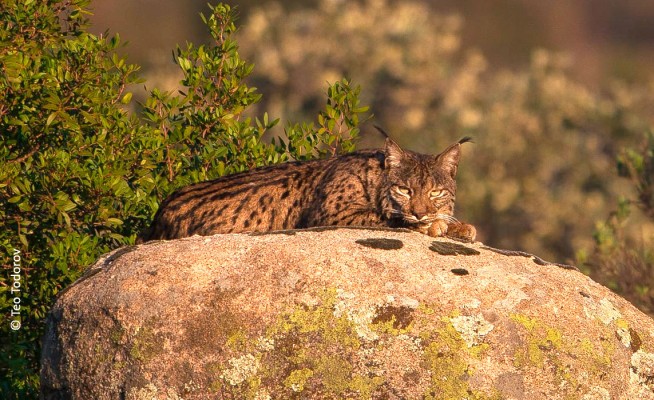
Some key species of this tour
Iberian Lynx, River Otter, Wild Boar, Mouflon, Spanish Imperial Eagle, Golden Eagle, Eurasian Griffon Vulture, White-headed Duck, Great Bustard, Little Bustard, Bearded Reedling, Common Crane, Pin-tailed Sandgrouse, Purple Swamphen, Hawfinch, Rock Sparrow, Black Wheatear, Blue Rock Thrush, Rock Bunting, Cirl Bunting...
The price includes
- Ground transport from Madrid airport in modern, fully seat-belted, air conditioned 9-seat vehicle
- 6 Nights accommodation with en suite bathroom (4 nights in Andujar & 2 nights in Ciudad Real)
- All meals inc breakfast, fantastic “tapas-raciones” lunches and evening meals + red wine in a moderate consumption
- Services of professional birding guide
- Basic travel insurance
- Bird checklist
- All taxes
Price doesn’t include
- Air fare (Easyjet, Ryanair & other companies operate daily flights from several UK airports)
- Extra drinks and other items of a personal nature
A detailed itinerary of this tour
Day 1 / January 23: Madrid airport - La Mancha - Sierra de Andujar I (Lynx land)
Meet and welcome at Madrid airport before we transfer to Sierra de Andújar, Andalucía. We do the first birding on route in the area known as “La Mancha Húmeda” , a vast flat region containing some important Ramsar wetlands and also arable fields where Great and Little Bustards are present all year round. We continue driving south, arriving at our accommodation for our evening meal. Accommodation and dinner in the Sierra de Andújar.
Day 2 / January 24: Sierra de Andujar II
We will dedicate the following days to exploring the best locations in our search to find the rarest feline in the world, the Iberian Lynx. Most of the area is strictly protected as a Natural Park, being the most important refuge for this magnificent animal. Although 90 individuals still survive in and around the Doñana National Park, plus a few more in nearby locations, all of them in the SW corner of Spain, the Sierra de Andújar is without doubt the best spot to try and see this highly endangered species. For this our first day we will wake up early in the morning in search of our target in the Encinarejo area where some other mammals are also often recorded such as River Otter, Wild Boar, Red Fox and Red Deer.
This is also a great place to enjoy along with the local territorial Spanish Imperial Eagles as they mark their territories using their raucous calls and plunging display flights . Other raptors are also present in the Park, including Griffon and Black Vultures, and Northern Goshawks. In the early evening we will drive up to the Virgen de la Cabeza sanctuary where we will enjoy the impressive scenery.
Day 3 / January 25: Sierra de Andujar III
Another full day looking for Iberian Lynx in and adjacent to the Sierra de Andújar Natural Park. Today we'll explore the valley close to the Jándula reservoir, in particular searching the slopes of the area known as Las Lanchas. It is not difficult to see Mouflon here, while up in the sky we will surely find more Spanish Imperial Eagles in addition to a few other raptors. Hawfinch, Rock Bunting, Iberian Azure-winged Magpie, Dartford and Sardinian Warblers are all present in numbers too. Back to our accommodaton in Sierra de Andújar.
Day 4 / January 26: Sierra de Andujar IV
Our fourth day will provide us the last chance to find our quarry again, known locally as the "ghost of the hills", although hopefully by then we will have had good views of the Iberian Lynx during the previous days. Iberian Green Woodpecker, Cirl Bunting, Blue Rock Thrush, Rock Sparrow and even depending on previous cold fronts the rare Wallcreeper! will be all possible.
Day 5 / January 27: Sierra de Andujar V - Campo de Calatrava Plains - Ciudad Real
Depending on our success on previous days with the Lynx we will dedicate the last morning in Andujar to our last search or just move into the plains of the Important Bird Area of Campo de Calatrava. Although still an unknown place for many wildlifers this region holds an impresive concentration of steppe birds during the cold months, mainly Pin-tailed Sandgrouse and Little Bustards, which can be seen in mixed flocks of several hundreds of birds. Great Bustards, Black-bellied Sandgrouse, Red-billed Choughs and Golden Plovers are also well present here. In the evening we will move to our new base in the town of Ciudad Real. Dinner and accommodation.
Day 6 / January 28: Ciudad Real - Alarcos & El Vicario reservoir - Calatrava castle
Today we will explore two main different ecosystems, marshes, in the Guadiana river near the ruins of Alarcos and the El Vicario reservoir, and the rocky habitats, in the Calatrava castle and surrounding hills a good place for raptors and species related to the cliffs. Amongst the wildfowl present in the wetlands we might see Glossy Ibis, Great Egret, Eurasian Spoonbill, Western Marsh Harrier and with some luck Black-shouldered Kite, with a couple of individuals overwintering in recent years. In the cliffs around the Calatrava castle we should be able to find Black Wheatear, Blue-Rock Thrush, Rock Bunting and Hawfinch. This is also a good place for both Bonelli's and Golden Eagles. In the evening travel back to Ciudad Real for a meal and accommodation.
Day 7 / January 29: Ciudad Real - Daimiel N.P. - Madrid airport
After checking out in our hotel of Ciudad Real we will then move towards the town of Daimiel where we will dedicate time to bird in the Tablas de Daimiel National Park and the nearby Navaseca lagoon. Excellent chances for Penduline and Bearded Tit, White-headed Duck, Water Rail, Purple Swamp Hen, Black-necked Grebe, Reed Bunting, Red-crested Pochard and Ferruginous Duck (with at least 9 different individuals present in the last winters). We will arrive Madrid after lunch with time to catch our flights back home.
This itinerary might change according weather conditions or at discretion of our guide

